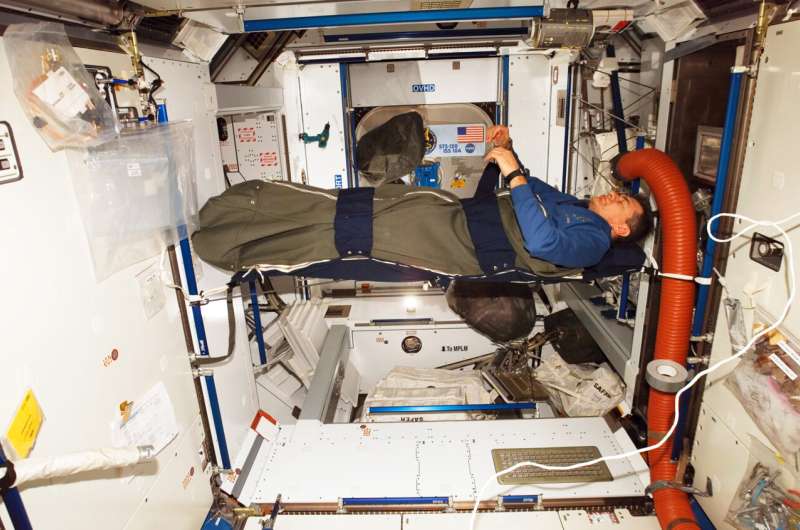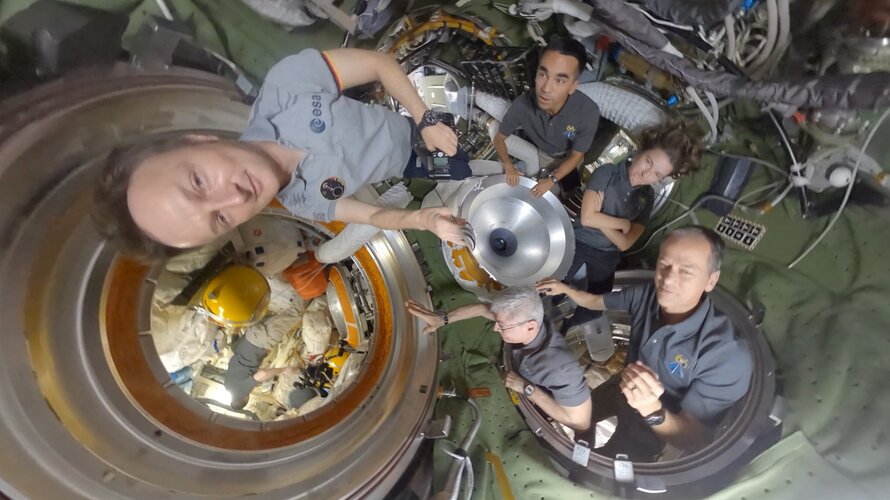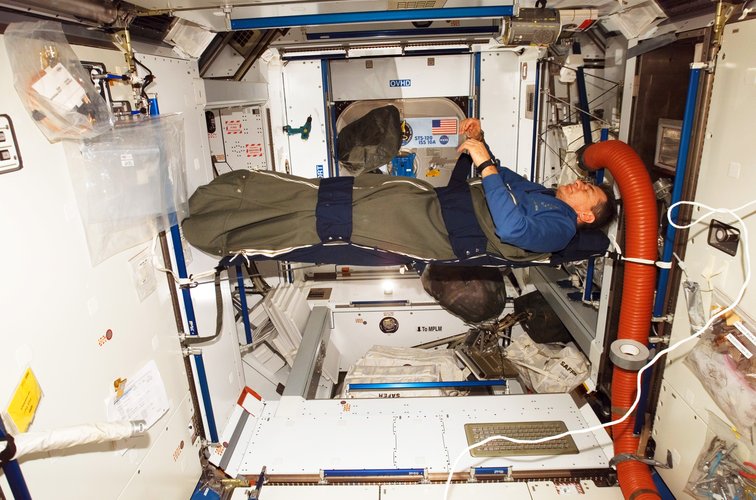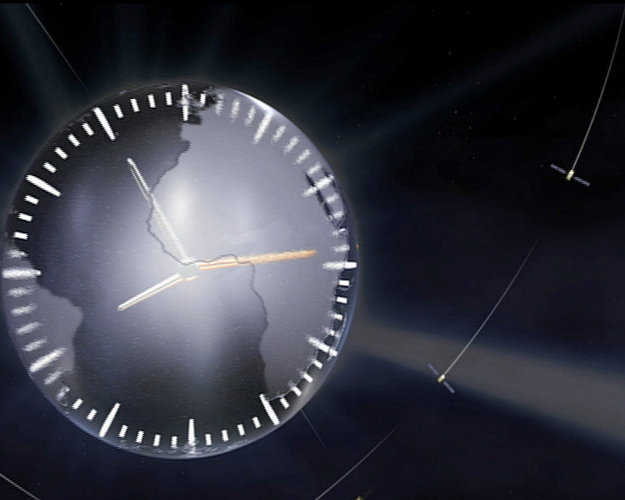
Copernical Team
SpaceX sucessfully launches Italian Earth-observation satellite
 SpaceX successfully launched an Italian Earth-observation satellite, the COSMO-SkyMed Second Generation 2, from Florida after several days of setbacks.
A Falcon 9 rocket mounted with the spacecraft lifted off at 6:11 p.m. EST from Complex 40 at Cape Canaveral Space Force Station.
SpaceX scrubbed the launch three times due to weather worries and a fourth time on Sunday because a cruis
SpaceX successfully launched an Italian Earth-observation satellite, the COSMO-SkyMed Second Generation 2, from Florida after several days of setbacks.
A Falcon 9 rocket mounted with the spacecraft lifted off at 6:11 p.m. EST from Complex 40 at Cape Canaveral Space Force Station.
SpaceX scrubbed the launch three times due to weather worries and a fourth time on Sunday because a cruis New funding to support sustainable future of space
 The UK Space Agency is providing 1.7 million pounds for new projects to support sustainable space operations, Science Minister George Freeman announced Monday.
The 13 new projects will help track and remove dangerous debris in space. They include an AI-based tool which can take autonomous action to avoid a collision and another which will see multiple small spacecraft fired at debris befor
The UK Space Agency is providing 1.7 million pounds for new projects to support sustainable space operations, Science Minister George Freeman announced Monday.
The 13 new projects will help track and remove dangerous debris in space. They include an AI-based tool which can take autonomous action to avoid a collision and another which will see multiple small spacecraft fired at debris befor NASA asteroid tracking system now capable of full sky search
 The NASA-funded Asteroid Terrestrial-impact Last Alert System (ATLAS)-a state-of-the-art asteroid detection system operated by the University of Hawaii (UH) Institute for Astronomy (IfA) for the agency's Planetary Defense Coordination Office (PDCO)-has reached a new milestone by becoming the first survey capable of searching the entire dark sky every 24 hours for near-Earth objects (NEOs) that c
The NASA-funded Asteroid Terrestrial-impact Last Alert System (ATLAS)-a state-of-the-art asteroid detection system operated by the University of Hawaii (UH) Institute for Astronomy (IfA) for the agency's Planetary Defense Coordination Office (PDCO)-has reached a new milestone by becoming the first survey capable of searching the entire dark sky every 24 hours for near-Earth objects (NEOs) that c NASA provides updated International Space Station Transition Plan
 The International Space Station is a unique laboratory that is returning enormous scientific, educational, and technological developments to benefit people on Earth and is enabling our ability to travel into deep space. The Biden-Harris Administration's commitment to extend space station operations until 2030 will enable the United States to continue to reap these benefits for the next decade wh
The International Space Station is a unique laboratory that is returning enormous scientific, educational, and technological developments to benefit people on Earth and is enabling our ability to travel into deep space. The Biden-Harris Administration's commitment to extend space station operations until 2030 will enable the United States to continue to reap these benefits for the next decade wh Hibernating for a trip to Mars, the way bears do

Hibernating astronauts could be the best way to save mission costs, reduce the size of spacecraft by a third and keep crew healthy on their way to Mars. An ESA-led investigation suggests that human hibernation goes beyond the realm of science-fiction and may become a game-changing technique for space travel.
When packing for a return flight to the red planet, space engineers account for around two years' worth of food and water for the crew.
Get to grips with analysing climate data

Satellites provide crucial, and increasingly important, information to help understand our changing climate. However, better understanding Earth observation data can be a daunting task for new users. A new online course, developed by the University of Twente, on behalf of ESA, helps students, researchers and other professionals analyse satellite data to help measure and mitigate against the effects of climate change.
Hello and goodbye in 360° | Cosmic Kiss
 Video:
00:02:58
Video:
00:02:58
Spaceflight participants Yusaku Maezawa and Yozo Hirano and Russian cosmonaut Alexander Misurkin were welcomed to the International Space Station on 8 December 2021 for a 12 day stay in space. Experience their arrival and farewell in 360° as captured by ESA astronaut Matthias Maurer from within the Russian segment.
Also seen in this video are Expedition 66 Commander Anton Shkaplerov, Roscosmos cosmonaut Pyotr Dubrov and NASA astronauts Mark Vande Hei, Raja Chari, Tom Marshburn, and Kayla Barron.
Matthias was launched to the International Space Station for his six-month ESA mission known as Cosmic Kiss on 11 November 2021. During
Hibernate for a trip to Mars, the bear way

Hibernating astronauts could be the best way to save mission costs, reduce the size of spacecraft by a third and keep crew healthy on their way to Mars. An ESA-led investigation suggests that human hibernation goes beyond the realm of science-fiction and may become a game-changing technique for space travel.
Study probes Earth's turbulent past to explain where oceans came from
 The origin of water on our planet is a hot question: Water has immense implications for plate tectonics, climate, the origin of life on Earth, and potential habitability of other Earth-like planets. In a recent study in Physical Review Letters, a Skoltech professor and his Chinese colleagues suggest a chemical compound that - although now extinct - could have preserved water deep underground in
The origin of water on our planet is a hot question: Water has immense implications for plate tectonics, climate, the origin of life on Earth, and potential habitability of other Earth-like planets. In a recent study in Physical Review Letters, a Skoltech professor and his Chinese colleagues suggest a chemical compound that - although now extinct - could have preserved water deep underground in 

